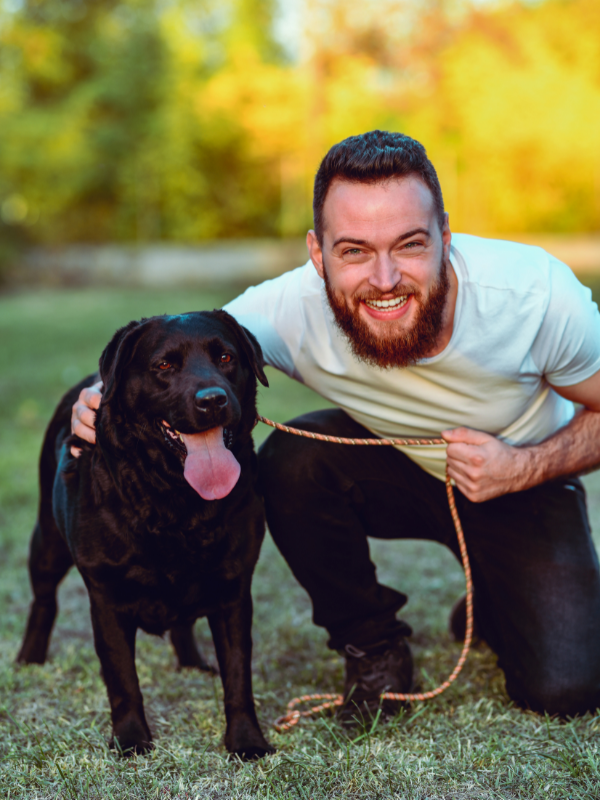737-215-3211

Mastering the Art of Training: Top 10 Training Tips for Stubborn Dogs
If you've ever found yourself pulling your hair out in frustration because your furry friend just doesn't seem to understand 'fetch' or refuses to drop that slipper, you're not alone. Training a stubborn dog can be a challenging task. However, with the right guidance, a spoonful of patience, and a dash of persistence, you can turn this seemingly impossible task into a rewarding journey. Our comprehensive guide to the top 10 training tips for stubborn dogs will show you the ropes, providing practical advice backed by canine behavior science.
Understanding Dog Behavior: The First Step in Training
Before diving headlong into the training process, it's crucial to understand what makes your dog tick. Different breeds have different temperaments, and these can often influence how they respond to training.
Dog Breeds and Their Behavioral Traits
Certain breeds like the Siberian Husky, Beagle, and Dachshund are notoriously known for their stubborn streak. They were bred to work independently, making decisions without human intervention. Hence, it is only natural that they exhibit an independent spirit. Understand your dog's breed characteristics and use them to tailor your training strategies.
The Influence of Past Experiences
Past experiences significantly affect a dog's behavior. A dog that has had negative encounters may be more resistant to training. However, with consistent positive reinforcement, you can break down these barriers and build trust.
Establishing Dominance: The Foundation of Training
Training stubborn dogs require establishing dominance. However, it's important to remember that being dominant doesn't mean being harsh or aggressive.
Displaying Confidence
Dogs are adept at picking up on their owners' emotions. If you're anxious or unsure, they'll sense it. Show your pet that you're a confident leader by maintaining a firm but calm demeanor during training sessions.
Consistent Rules and Boundaries
Consistency is key. By setting clear boundaries and sticking to them, you're sending a clear message to your dog about who's in charge.
Positive Reinforcement: The Key to Successful Training
One of the most powerful tools at your disposal when training a stubborn dog is positive reinforcement. This technique involves rewarding good behavior, which encourages your pet to repeat it.
Reward-Based Training
The idea behind reward-based training is simple: dogs will do more of what they find rewarding. This could be a tasty treat, a favorite toy, or some quality time with their favorite human.
The Timing of Rewards
Timing is everything when it comes to positive reinforcement. The reward must be given immediately after your dog performs the desired action to ensure they make the connection.
Patience and Persistence: The Virtues of Dog Training
Training a stubborn dog isn't a sprint; it's a marathon. Patience and persistence are your best allies in this journey.
The Role of Patience in Training
Getting frustrated only derails the training process. By keeping a cool head and maintaining patience, you create a calm and conducive environment for your dog to learn.
Persistence Pays Off
Progress may be slow, but don't give up. Remember, consistency is key. Stick with it, and you'll soon see results.
Keeping Training Sessions Short and Sweet
Long, drawn-out training sessions can be counterproductive, especially with stubborn dogs. Short, frequent sessions are far more effective.
The Benefits of Short Training Sessions
Short sessions keep training fun and engaging, reducing the chances of your dog becoming bored or overwhelmed.
Frequency Over Duration
Instead of one long session, aim for multiple short ones throughout the day. This gives your dog ample opportunities to learn and reinforce their training.
Socialization: An Integral Part of Dog Training
Socialization is a vital aspect of dog training. It helps your pet get accustomed to various environments, people, and other animals.
The Importance of Early Socialization
The best time to start socialization is during puppyhood. This is when dogs are most receptive to new experiences, making it an ideal time to expose them to different situations.
Tips for Effective Socialization
Start by introducing your pet to calm and controlled environments before gradually increasing the complexity. Remember, the goal is to make socialization a positive experience for your dog.
Using Distractions to Your Advantage
Distractions can be a nuisance when training stubborn dogs, but with the right approach, they can become valuable training tools.
The Role of Distractions in Training
Training your dog to focus on you despite distractions around them enhances their obedience and focus.
How to Incorporate Distractions into Training
Start by training your dog in a quiet, distraction-free environment. As they improve, gradually introduce distractions, increasing the difficulty over time.
The Power of Voice Commands
Voice commands are an integral part of dog training. Using them effectively can drastically improve your pet's obedience.
Choosing the Right Commands
Keep voice commands simple and distinct. A one or two-word command is ideal. Use a firm, but friendly tone to convey your message.
Consistency in Using Voice Commands
Consistency is vital when using voice commands. Everyone in the family should use the same commands to avoid confusing the dog.
The Role of Exercise in Dog Training
A well-exercised dog is a well-behaved dog. Regular exercise helps expend excess energy, reducing hyperactivity and increasing focus during training sessions.
The Benefits of Exercise
Aside from physical health benefits, exercise also provides mental stimulation, reducing boredom and associated behavior problems.
Exercise and Training: The Perfect Combo
Combine exercise with training for maximum effect. For example, a game of fetch can be a great way to practice 'drop it' or 'bring it' commands.
Seeking Professional Help
If despite your best efforts, your stubborn dog continues to resist training, don't be afraid to seek professional help.
When to Consider a Professional Dog Trainer
Consider seeking professional help if you're facing persistent behavioral issues, or if your dog shows signs of aggression.
Choosing the Right Trainer
When choosing a trainer, look for one who uses humane training methods and can provide references or credentials. Remember, it's your pet's well-being at stake.
FAQs
1. My dog seems to forget the training. What am I doing wrong?
Consistency is crucial in dog training. Keep practicing the commands regularly, and remember, patience is key.
2. My dog listens to me at home but ignores me outside. Why is this happening?
This is likely due to distractions. Gradually introduce distractions into your training to help your dog focus better.
3. My dog is afraid of certain people or situations. How can I help them overcome this fear?
Through gradual desensitization and positive reinforcement, you can help your pet become more comfortable in fear-inducing situations.
4. Can older dogs be trained, or is the saying 'You can't teach an old dog new tricks' true?
Contrary to the saying, older dogs can indeed learn new tricks. It might take a bit longer, but with patience and consistent training, they can certainly learn.
5. What should I do if my dog is showing aggressive behavior?
Aggression can be a serious issue and should be addressed immediately. Consult a professional dog trainer or a behavioral specialist.
6. How can I tell if my dog is stressed during training?
Signs of stress include excessive panting, dilated pupils, and repeated yawning. If you notice these, consider taking a break or slowing down the pace of training.
Conclusion
Training a stubborn dog can be a challenge, but with the right approach, it is certainly achievable. Implementing these top 10 training tips for stubborn dogs will undoubtedly assist in transforming your headstrong pet into a well-behaved companion. Just remember, patience, consistency, and understanding are your best allies in this rewarding journey.





Leave a comment